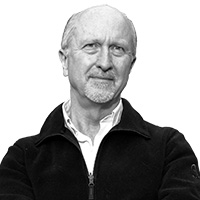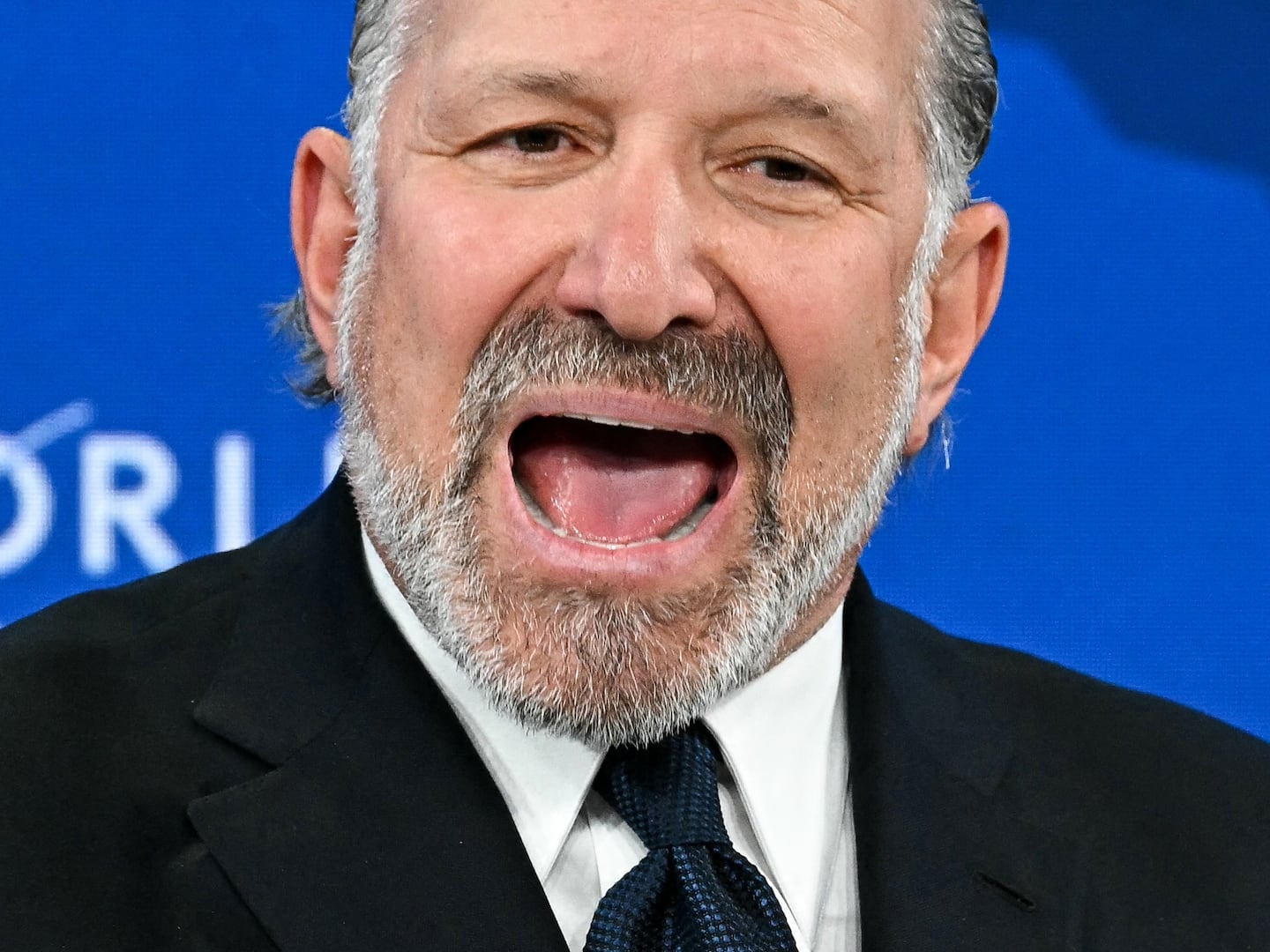“Mr. Dickey? This is Jim Angleton.”
I looked at the phone. I wasn’t sure what to say. This was 1978. I was a 26-year-old reporter on the Metro desk of The Washington Post, and James Jesus Angleton was the most famous, or infamous, spy in America.
Angleton had been forced to resign from the Central Intelligence Agency more than three years earlier after two decades running its counterintelligence operations. In news reports and in outright fiction, Angleton was portrayed as amazingly eccentric and wildly paranoid, the mastermind who kept American intelligence operations safe from Soviet “moles,” and the madman whose “sick-think” destroyed careers and paralyzed the agency with his obsessive hunt for traitors. Indeed, there were some who said he’d done so much damage that Angleton must be the mole.
His name became part of every enigmatic event of the 1960s, including the assassination of President John F. Kennedy and the subsequent murder of one of his mistresses (the ex-wife of another CIA man).
What seemed to be certain was that over the years Angleton had come to believe there was a “monster plot” by Moscow to deceive the United States at many different levels, wheels turning in wheels, a “wilderness of mirrors,” as he would say, taking a line from T.S. Eliot’s poem “Gerontion.”
But what could he possibly want from me?
Angleton was interested, he said, in a story I’d been covering: the trial of an alleged Vietnamese spy named David Truong and his American accomplice, Ronald Humphrey, an employee of the United States Information Agency.
The Vietnam War had come to its messy, humiliating end three years before with the fall of Saigon, but the wounds of that defeat were still carved deep into the American psyche, and the Truong case seemed at the time an awkward, and rather pitiful, attempt to win something back. But this was pretty small potatoes. Why would that interest the man known around the agency as “Mother”?
In Eliot’s poem, the line after “the wilderness of mirrors” asks “What will the spider do…?” Of course, one wanted to know.
And so, a few days later, I met the master-spy at one of his favorite haunts in D.C., the Army and Navy Club on Farragut Square, a sea of white tablecloths amid an opulent 19th century décor, with a bar, in those days, at the far end of the room.
His appearance was as it had been described in countless caricatures: gray on gray, with gray hair, grayish skin, a gray suit. His build was tall and lanky but slightly stooped, and he had long, thin fingers. He was, indeed, a little spidery. His glasses were heavy-framed, and they were worn, one might think, as much for their symbolic weight as for their optical correction.
The hour was, I believe, about 1 o’clock, and apparently Angleton had not made a reservation. All the tables were filled. So, we started drinking.
Angleton’s poison may have been whiskey. I know it was hard liquor, because I was trying to keep up with him and the afternoon grew rather foggy rather quickly. My poison was scotch on the rocks. A real mistake. The drinks kept coming; the food did not. I switched to scotch and soda. And glasses of water. I had a Coke. But it was too late.
Mother asked me about the spy case I was covering. What was interesting about Truong, the personable son of a former South Vietnamese presidential candidate who’d run on a peace platform in 1967, was that he’d positioned himself in Washington as a voice of sanity in an increasingly insane war. He seemed to know anybody who was anybody in D.C. who had an interest in Vietnam.
Angleton started talking about William Colby, who had been the Saigon station chief, head of the agency’s Far East Division, and director of the by-then infamous Phoenix Program “that sought to attack and destroy the political infrastructure of the Viet Cong,” as the CIA’s in-house history puts it. President Richard Nixon appointed Colby Director of Central Intelligence in 1973. In 1974, to end “the great mole hunt,” Colby fired Angleton before, he, too, left the agency in 1976.
Obviously, Mother wanted to see if there was some dirt he could use against his former enemy within. How well did Colby know David Truong? Did he know him at all?
I didn’t have the answer. I don’t think I was much help and I didn’t really want to be. For a journalist, especially in those post-Watergate days, the CIA was the enemy, and the idea of sharing information with spies, current or former, was pure anathema.
So, rather quickly, what had started as a polite dialogue there in the Army and Navy Club bar became an almost seamless Angleton monologue about Colby and how he had betrayed not only Angleton, but Angleton’s people, and was leaving America blind to its enemies.
By the time we sat down to eat, the drinking was taking its toll not only on my brain but on my bladder, and I was looking for a chance to excuse myself. But none came. The monologue continued, as I say, seamlessly, until Angleton, without breaking stride, said, “You know, Prince von Hohenstaufen of Bavaria used to say that you could judge a man’s mettle by how long he could hold his water.”
He’d read my pain, and I hadn’t passed the test.
When I came back into the dining room, I saw that it was empty. We were the last people there. And Angleton, the sick-thinking son of a bitch, was sitting right where I had left him, his back to the room full of empty tablecloths, holding a Virginia Slim cigarette in those spidery fingers. Gray on gray on gray.
Five or six years later, after a stint in Central America covering the CIA’s wars, and then on assignment in the Middle East, where I began to explore that region’s vast universe of untrue facts, I was much more familiar with the kinds of people and the ways of thinking that Angleton represented.
They were a dying breed, in fact, and their greatest skill, the collection and analysis of “human intelligence” was a dying art. The big money—the almost unfathomably huge money—spent by the American intelligence community went on satellites and electronic snooping of various descriptions. Serious intelligence gathering was supposed to come through technical means. The “people” part of the CIA was withering away, except, perhaps, for covert ops of the kind Colby had favored. As his son told a conference at the Wilson Center in Washington in 2012, “My father’s favorite expression was, ‘March towards the sound of the guns.’ Get into the action. If there’s a battle going on, go to it.”
The sort of mind games that fascinated Angleton were left to conspiracy theorists, novelists, and screenwriters to play with, which is why, from Edward Jay Epstein’s Legend to Ben Macintyre’s A Spy Among Friends so many fascinating books continue to be written that touch on Angleton’s career. (In fact, the CIA’s in-house historian, David Robarge, has reviewed several of them on the CIA website.)
In one way or another, what all of them show us, although only a handful do so directly, is that Angleton the spy was essentially—and I use the word advisedly—a poet. Or, perhaps better said, a poet manqué. His mind worked like that of a literary critic teasing meaning out of language that others might miss, or that might not be there at all. There is no matrix that can explain the largely subjective and instinctive logic involved, and, like many a literary critic, Angleton fell prey to his own desire to develop an overarching theory, in his case an aesthetic of espionage.
Angleton’s personal background was multilingual and multicultural. He was born in his father’s home state of Idaho (perhaps the original source of his famous interest in fly fishing); his mother came from Mexico (hence his middle name, Jesús, which is not uncommon in Latin America); and he spent much of his youth in Europe, first in Italy, where his father was making something of a fortune as an executive with the National Cash Register Company, and then at Malvern College, an elite British boarding school.
Angleton went to Yale in 1937, as World War II loomed on the horizon, and while still an undergraduate, he and his roommate Reed Whittemore started a small but internationally important literary magazine called Furioso with the encouragement of and contributions by Ezra Pound, William Carlos Williams, and e.e. cummings, among many others. (Years later, CIA director Richard Helms would note that the anglophile Angleton’s sartorial resemblance to T.S. Eliot was “not entirely coincidental.” Whittemore, for his part, went on to become one of the poets laureate of the United States.)
Michael Holzman, in the 2008 study James Jesus Angleton, the CIA, and the Craft of Intelligence, looks in depth at the impact on Angleton of the New Criticism in the 1930s, a school of analysis fascinated with, as one important work by William Empson put it, “seven types of ambiguity.”
(As Empson defined “ambiguity” it was “any verbal nuance, however slight, which gives room for alternative reactions to the same piece of language.” It’s little wonder that Colby, and others, eventually found Angleton’s explanations of Soviet plots very hard to follow.)
During World War II, Angleton joined the OSS, the forerunner of the CIA, and was one of the very, very few members of that organization given access to the Ultra secret, the material collected after Enigma broke the German codes. He was also shown the workings of the great British deception called “Double-Cross,” using fake or turned agents to misinform and mislead the Nazis. His instructor in such massive deceit: a brilliant young operative in the British Secret Intelligence Service named Kim Philby.
Harold Adrian Russell Philby, whose father, a famous explorer of the Arabian peninsula, had nicknamed him “Kim” after Rudyard Kipling’s boy-spy in the Great Game, has without doubt the greatest literary value of any secret agent in history, and it is at their first point of contact that the Ur-Narrative of Angleton’s career usually begins.
While working in fact for the Soviets, Philby rose very close to the top of the British secret service, betrayed many sources and contacts who subsequently were killed, and eventually was exposed as the most famous “mole” in the 20th century.
Without Philby, John Le Carré’s works would be much less interesting. In Tinker, Tailor, Soldier, Spy he was the model for Bill Haydon (Colin Firth in the recent movie). More recently, Robert Littell’s novel, Young Philby, explores the question of the spy’s allegiances and motivations in both fact and fiction, and Ben Macintyre’s A Spy Among Friends: Kim Philby and the Great Betrayal takes another close and compelling look.
The core question when it comes to Angleton is how could he not have known that Philby once had, and might still have had, communist sympathies.
In retrospect, it is increasingly clear that Angleton did know something—maybe more than something—but either ignored what he knew (the most common judgment) or used it in ways the world is still trying to figure out.
In 1934, fresh out of Cambridge, Philby had gone to Vienna and joined in the street fighting against the rising power of the Nazis. In those days, the socialists and communists often defined themselves as “anti-fascist,” but Philby went a bit beyond that. He married Alice “Litzi” Friedman, a young divorcee deeply committed to the Soviet Communist cause, and through her contacts he eventually met Arnold Deutsch, an associate of the radical sex therapist Wilhelm Reich who invented what later was parodied as the “orgasmatron.” More importantly, Deutsch was a Soviet operative who recruited and “ran” Philby for several years.
Kim and Litzi did not stay together for very long. He went off to Spain, where he did his best, working as a freelance journalist, to impress people with his fascist sympathies, then he joined the British Secret Intelligence Service (MI6) and started working his way up.
In 1946 Philby’s then-partner, Aileen Furse, was pregnant with their fourth child and he told his friends and his British employer he was going to marry her. According to Ben Macintyre, that news came as a shock to Angleton, who had thought they already were married.
Whether Philby told the American why he’d waited so long to wed the mother of his children is not clear, but he did approach the deputy director of MI6, Valentine Vivian, according to Macintyre, and “explained that, as an impetuous youth, he had married a left-wing Austrian, whom he now planned to divorce in order to make an honest woman of Aileen. The revelation does not seem to have given Vee-Vee a moment’s concern.”
There are multiple levels of ambiguity here, but one can suppose that Angleton got pretty much the same version as Vee-Vee in 1946: Philby’s connection with Litzi and her communism were youthful indiscretions.
Then, in 1949, Philby was assigned to Washington, D.C., where Angleton was, by then, running CIA ops around the world. For two years, over well-lubricated lunches at Harvey’s Restaurant, they met to exchange information as official liaisons—CIA and MI6—and also as old friends.
By then, among Angleton’s other accomplishments, he had managed to get control within the agency of the Israeli account, which he considered a valuable source, not least, of information about the Soviet Union.
“Admiration for the Jewish state became an obsession with Angleton, who fell captive to the magic of Israeli intelligence,” wrote Dan Raviv and Yossi Melman in their 1990 history of the Mossad, and such was the debt of gratitude felt by the Israelis that in November 1987, after Angleton’s death, Jerusalem Mayor Teddy Kollek and then-Defense Minister Yitzhak Rabin dedicated a “memorial corner” of a park not far from the King David Hotel where there's an inscription in English, Hebrew and Arabic: “IN MEMORY OF A DEAR FRIEND, JAMES (JIM) ANGLETON.”
As Kollek reminisced that day, he talked about how he first met Angleton while on a tour of CIA headquarters in 1950. Minutes later, he said, he happened to bump into Philby. Amazed, he hurried back to Angleton’s office and asked him, “What is Philby doing here?”
“Kim is a good friend of ours and is the British MI6 representative in liaison with the CIA,” Angleton replied.
Kollek was stunned. As a young Austrian socialist fighting the fascists in Vienna, Kollek had known Philby very well and knew his communist sympathies. Indeed, in 1934 Kollek was one of a handful of witnesses at Philby’s marriage to Litzi Friedman, “a Jewish Communist,” he told Angleton.
Yet Angleton seems to have taken no action.
“Not telling anyone. Not putting it in the file” was “par for the course with JJA,” according to the CIA’s official historian of Angleton’s counterintelligence career (as quoted by Anthony Cave Brown in his Philby biography). Angleton was “the sort who tucked information away in his hip pocket for future use. Not telling anyone. Not putting it in the file.”
As for those long lunches with Philby, Angleton is said to have destroyed whatever records, if any, were kept.
Of the many, many writers who have tried to make sense of all this, the most intriguing, to my mind, is Ron Rosenbaum, who wrote about the Angleton-Kollek-Philby relationship in Harper’s Magazine back in 1983, four years before JJA’s death and Kollek’s public revelation.
Rosenbaum explored all the possible permutations and combinations of spy vs. spy: Angleton knowing Philby might be a Soviet mole; Philby knowing Angleton might know... Was Angleton really Philby’s dupe, or vice versa? Or were they both so deep into the pleasures of ambiguity that they “felt less loyalty to their employers of record than to the game itself”?
Philby came under official suspicion in 1951, when it appeared he might have tipped off two old Cambridge buddies in his spy ring, Guy Burgess and Donald Maclean, that their covers were blown. They escaped to Moscow and Philby looked like he must be “the third man,” but nothing was proven.
This was at the height of McCarthyism in the United States, and Angleton defended Philby from suspicious American colleagues, suggesting he was the victim of a witch hunt that could damage relations with Kim’s still extensive circle of friends and supporters among the British elite.
Although Philby was removed from his previous sensitive position, he stayed on the MI6 payroll for the next dozen years, moved to Beirut, and worked as a journalist there for the Observer and The Economist. Not until Philby partially confessed, then escaped to Moscow in 1963, did Angleton admit that Philby must have been a Soviet agent all along.
But, again, Angleton must have known before that, even if somehow he’d ignored the Litzi Friedman connection for all those years. The Philby case had been “exhumed” in 1962, according to MI5 spycatcher Peter Wright, because of information supplied by a KGB major, Anatoliy Golitsyn, who defected in 1961 to the Americans —to Angleton’s shop—with information about a Soviet “ring of five” spies recruited in the 1930s in Britain. That was precisely what heated up the cold case of Burgess, Maclean, Philby, and their friends.
Golitsyn was Angleton’s all time favorite Soviet defector. The KGB veteran was demanding and capricious, but had a literary and historical intellect that fascinated the poetic chief of CIA counterintelligence.
Golitisyn said he had attended a meeting in 1959 with 2,000 other operatives and heard the outlines of a KGB strategy to “affect the fundamental reasoning power of the enemy.” Double agents planted deep inside the Western services were at work vetting and approving intelligence about the Russians that was in fact planted by the Russians. The Ring of Five involving Philby, which Golitsyn had exposed, was just a small part of the picture, he said. And Golitsyn warned there would be new “defectors” who would try to discredit his revelations.
Thus “the monster plot” was revealed, and the decade-long disastrous mole hunt began within the CIA, turning agent against agent, analyst against analyst, and discrediting one new defector after another, some of whom were treated abominably.
Angleton could see in the midst of this that everything and nothing was explained by Golitsyn's stories, all was ambiguity, but Angleton had found that overarching framework, that aesthetic, that he sought. And he clung to it until he died.
Ron Rosenbaum’s most intriguing theory? The KGB, with Philby in Moscow to help after 1963, made “a conscious decision to target the mind of James Angleton.” If so, the strategy seems to have been a success. By the time I met him for that long liquid lunch, his brilliance could no longer disguise his madness.
Today, the American intelligence community is still trying to come to terms with Angleton’s legacy. In 2012, Georgetown University’s Bruce Hoffman and the Wilson Center in Washington, D.C., organized a day-long conference that brought together Angleton’s defenders and critics.
“Opinion was divided,” Hoffman told me. “Almost three decades after his death, people are still debating. If there was a consensus it’s probably that he was a genius and was effective in the ’50s and ’60s, but as he relied on drink more and more, he really did become delusional and went off the rails.”
Within the agency and the U.S. government, it was not until the shock of the 9/11 attacks that the value of “humint” once again was accepted. But the way that was played by the Dick Cheney and Donald Rumsfeld faction of the George W. Bush administration was almost as demented as anything Angleton had conjured. Amid oracular statements about unknown unknowns, bad judgments about bad intelligence led to the disastrous Iraq war: garbage in, carnage out.
And, watching this, the man who rose from the ranks of the KGB to rule post-Soviet Russia, President Vladimir Putin, bided his time, built up his strength, and began what’s being called “hybrid warfare” to rebuild the Russian empire and discredit the United States on fronts as varied as Ukraine and Syria.
Although there are military components, the greatest triumph of Putin’s policy has been to play Washington against itself, working with it in some places, against it in others, until it sometimes appears the Americans have lost track of what side the Russians are on, and, indeed, what side they are on. We are wandering again, it would seem, in a Russian-made wilderness of mirrors.






